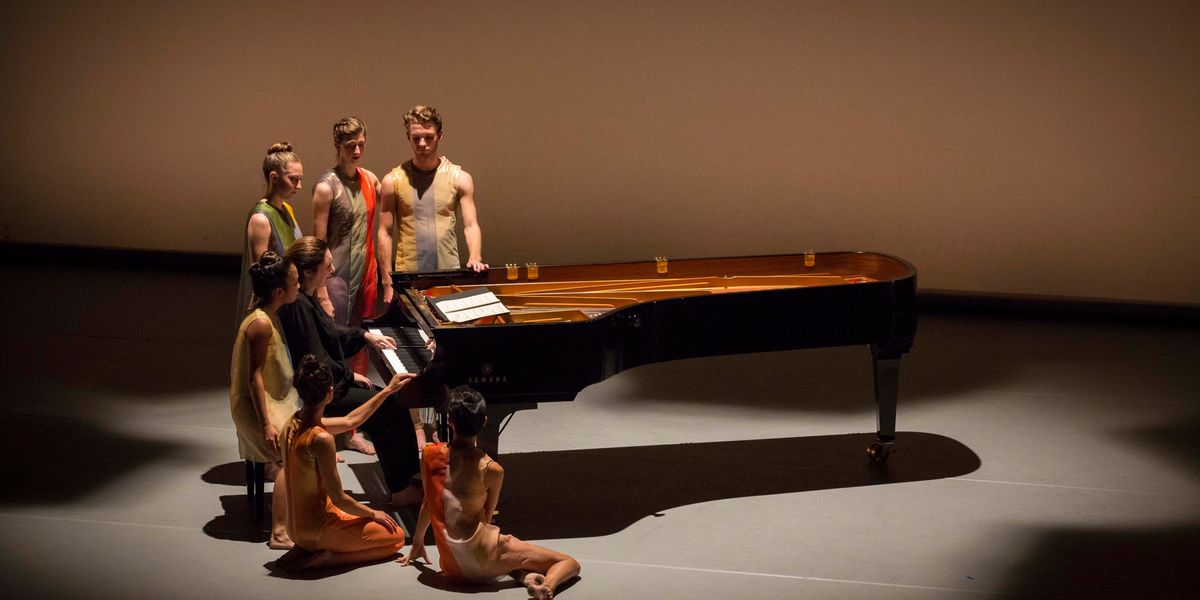What Do Dance Curators Actually Do?
Dance curators do a lot more than program a season. They spot raw talent, develop and shape careers, identify trends and create context around what they are presenting. But what does it take to get into this kind of wide-ranging work—and what do curators actually do on a daily basis?
Meg Booth: CEO, Society for the Performing Arts, Houston
 Jeff Gilmer, Courtesy Society for the Performing Arts
Jeff Gilmer, Courtesy Society for the Performing Arts
Her background:
Before coming to SPA, Booth helmed the dance program at the John F. Kennedy Center for the Performing Arts. She already had a track record of working at Twyla Tharp Dance, White Oak Dance Project and IMG Artists, so curating was a natural progression.
Planning a season:
“During my time at the Kennedy Center, Suzanne Farrell used to talk about selecting a program like meal planning. I am constantly looking for a diverse cross-section, from seminal artists to new work. I consider that, for some of the audience, this may be their first dance show. I also know that dance audiences need to be pushed.”
What’s changed:
“The equity, inclusion and diversity conversations have changed how we are looking at dance but also who we are looking at. I continue to recognize on a daily basis that every voice is important, everyone should feel welcome, and that I still have a lot to learn.”
A curator’s day-to-day:
“There is no typical day. I can be in the theater with the acoustician dealing with repositioning the speakers, I can be meeting with the cultural attaché of China, or watching a tech rehearsal, which I love to do because I can really observe the company culture.”
Building context:
Booth has expanded SPA’s outreach and community engagement: “Whether we are in the community doing master classes, pre- or post-show discussions or Q&As with the choreographers, I want people to be able to connect to the work.”
Eva Yaa Asantewaa: Senior curatorial director, Gibney, New York City
 Deneka Peniston, Courtesy Yaa Asantewaa
Deneka Peniston, Courtesy Yaa Asantewaa
Coming to curating:
Yaa Asantewaa came to Gibney in July 2018 with decades of experience as a writer, curator and cultural activist. She sees her work as a curator as a natural extension of writing. “It was a creative career aspiration I only subconsciously knew I had,” she says. “I didn’t go to school to learn how to curate, but I knew dance, I knew artists, I knew ideas that might not have been represented or well represented before.”
Her daily routine:
“Every day is different. I can be meeting with Gibney’s various departments. We collaborate with marketing, and are always looking for the best way for more people to see what we offer. I am seeing shows at least three evenings a week; I need to support the wider community.”
Meeting artists where they are:
Yaa Asantewaa sees a creative practice in the way she guides artists. “Helping them grow is so important to me; helping artists to be challenged by a different perspective, which includes veterans who are looking to expand and find something new.”
Selecting artists:
“I’m drawn to new, original angles in form or around a theme, artistic groundedness and confidence. I look for work that feels urgent. I want to be welcomed into an interesting world and encouraged to find my way around and learn more about it.”
Her biggest challenge:
“Reining in my ambition to curate numerous artists, projects and events. I’m discovering that I need a big tent. There probably isn’t an organization capable of dealing with the intersection of New York’s extraordinary wealth of intelligent, creative, exciting artists and my fertile imagination.”
Aaron Mattocks: Director of programming, The Joyce Theater, New York City
 James Clark, Courtesy Richard Kornberg & Associates
James Clark, Courtesy Richard Kornberg & Associates
His background:
Producer and Bessie Award–nominated dancer Aaron Mattocks has worked in just about every capacity in the field, from executive director and performer in Big Dance Theater, to company and general manager for Mark Morris Dance Group, and as manager and producer for Pam Tanowitz Dance.
His day-to-day:
“I’m in the theater for opening night, but then I’m out seeing shows other places three to four nights a week. And then there’s travel. I have been to Cuba and China so far and am very interested in cultural discourse and diplomacy.”
His approach:
Mattocks settled on an overarching umbrella of joy for his first season, with an emphasis on tap, and all with live music. “I came to dance from musical theater, so I’m not allergic to people enjoying themselves,” he says. “Joy can lead us to deeper subjects.”
Selecting shows:
“I try to see a performance live. I see 90 percent of what we bring. It’s important to see it with an audience. I may think, This is great dance, but is it for our audience? It’s really an assessment of marketability and whether or not it can attract enough people for our house. I can love a work, be completely blown away by it and still think it might not be the right choice.”
The hardest part of the job:
“I never imagined how many ways and times a day I would have to say no to artists and projects. It’s so challenging to respond to everything, to look at every single video.”
Building audiences:
“I have the ability to translate risky things to biz speak. It’s about how to frame risk as a tool for audience development. Everyone in the arts is wisely concerned about maintaining and growing their audiences, and I think that in order to do that, we need to expand what we’re programming to make work available and attractive to the broadest range of fellow humans. The Joyce really gets it. And I work closely with the marketing team so that shows are promoted in a nuanced way.”




